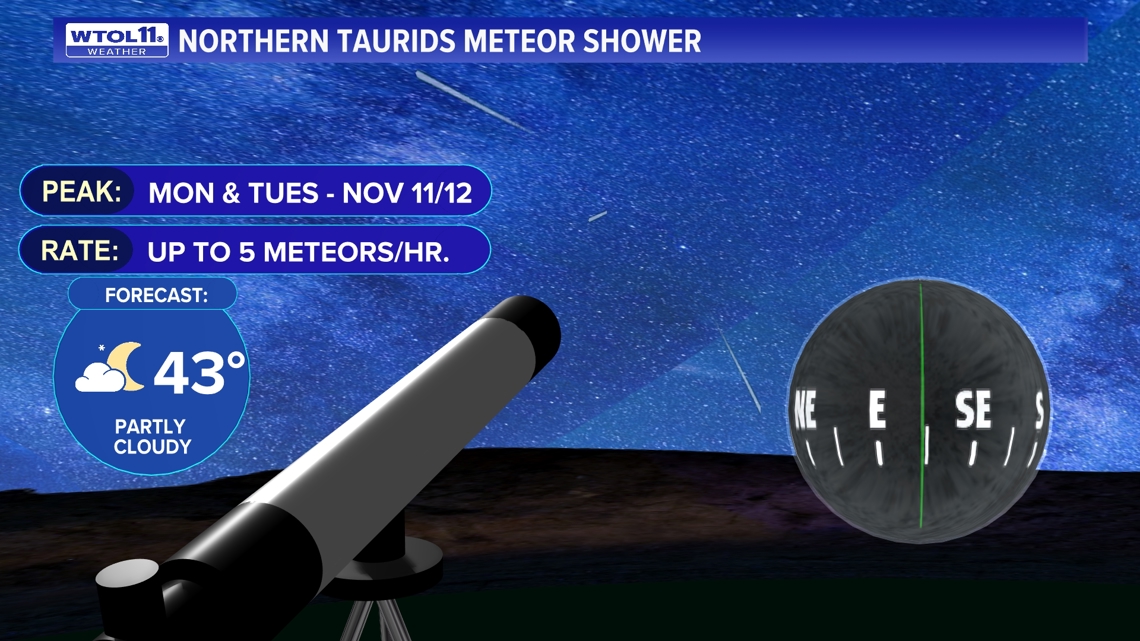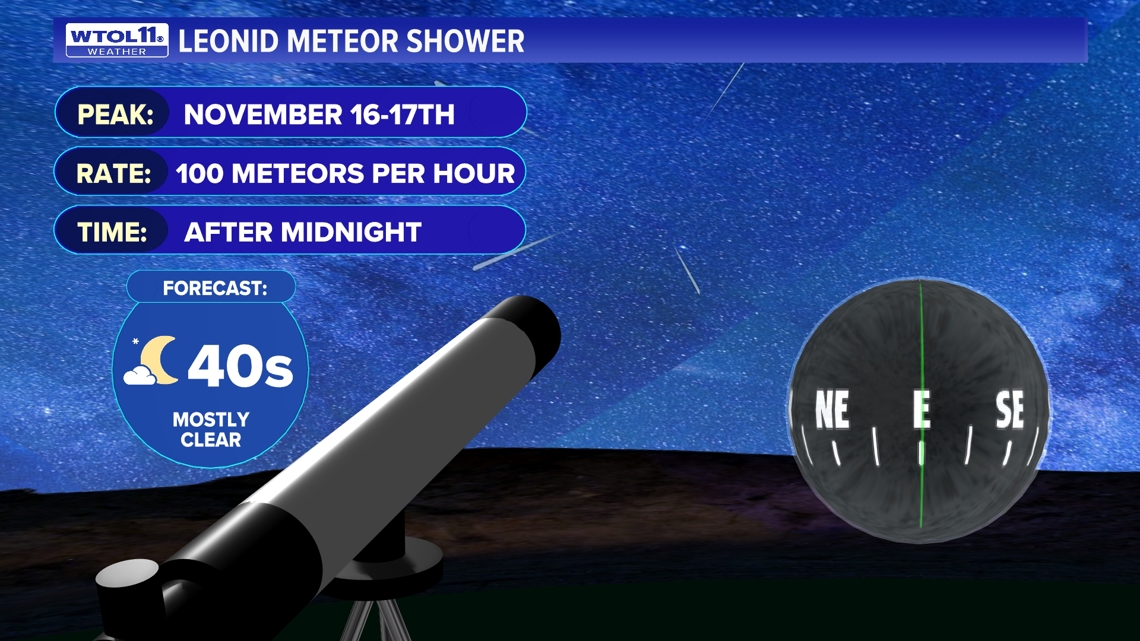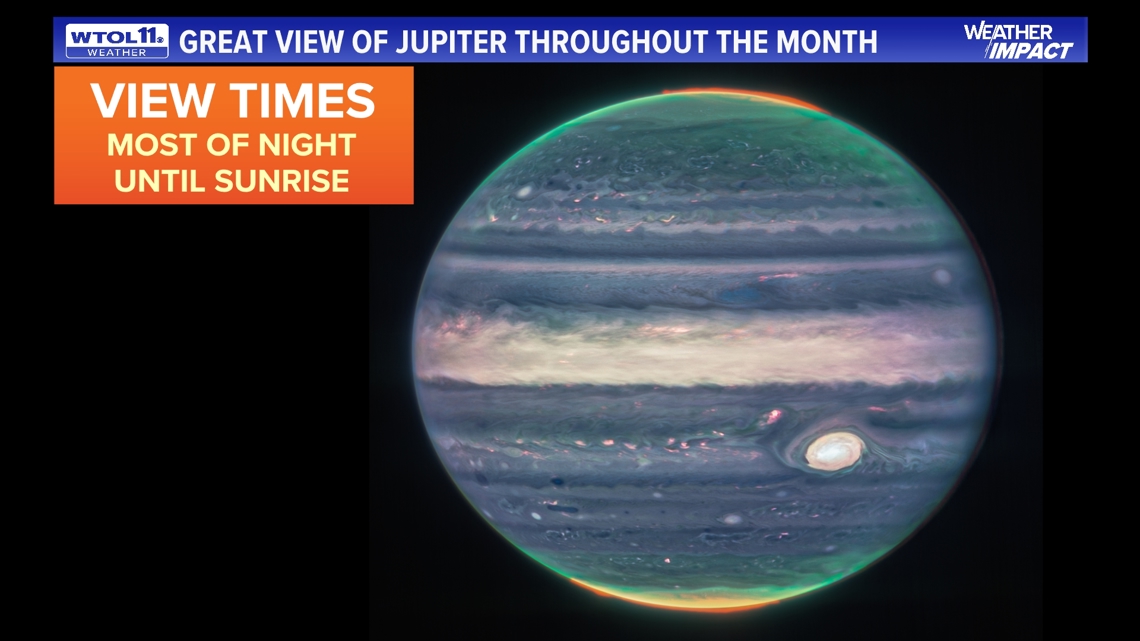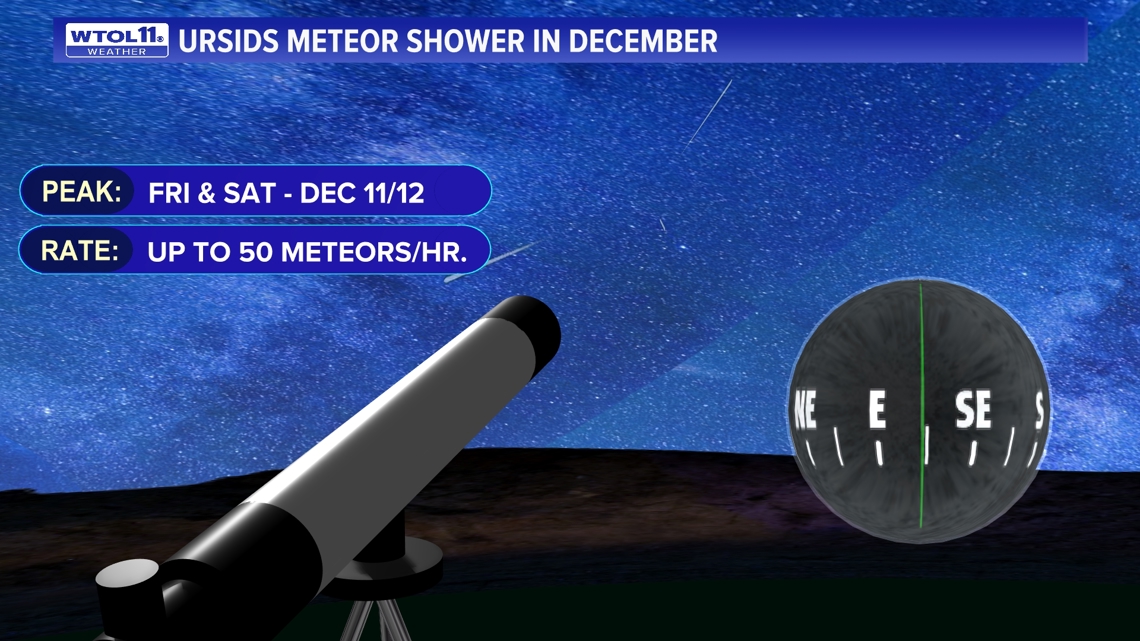TOLEDO, Ohio — Throughout the year, different celestial events grace the sky in such beautiful ways that seem to defy explanation. Space and astronomy are some of life’s greatest mysteries and natural phenomena. If you have gazed upon the stars, you might have witnessed a once-in-a-lifetime event like this year’s total solar eclipse. Although it lasted less than four minutes, it was one of the most spectacular sights ever seen in this country and won’t occur again in our area until 2099.
In 2024, we have truly been treated to many celestial events, with many astronomical events including the Northern Lights and the comet just last month. With only two months left in 2024, it is only right to break down what other astronomical events are left this year. That said, on this week’s WTOL 11 Weather Impact, we are breaking the top astronomical events happening for November and December.
Northern Taurids Meteor Shower
A more common monthly occurrence - but still a spectacular event if you can catch it in time - are meteor showers. In Ohio, we have several chances to see meteors passing by in the next couple of months.
First, we start with the Northern Taurids meteor showers, with the peak happening Nov. 11 and Nov. 12. According to the American Meteor Society, "this shower is much like the Southern Taurids, just active a bit later in the year. When the two showers are active simultaneously in late October and early November, there is sometimes a notable increase in fireball activity."
We truly will see the peak on Monday and Tuesday.


Leonids Meteor Shower
The chances of seeing meteors flying by are significantly high, as not one but two meteor showers will be happening near the same time as the Northern Taurids meteor showers.
According to records from the American Meteor Society, "the Leonids are best known for producing meteor storms in 1833, 1866, 1966, 1999, 2001, and 2002. These outbursts of meteor activity are best seen when the parent object, comet 55P/Tempel-Tuttle, is near perihelion (closest approach to the sun). Yet it is not the fresh material we see from the comet, but rather debris from earlier returns that also happens to be most dense simultaneously."
The Leonids are set to peak on Nov. 16-17, the AMS notes.


November Full Moon
Of course, we cannot talk about astronomical events without mentioning the moon, and once every month we get a magnificent view of the monthly full moon. Each month of the year has a significant name to distinguish what kind of moon it will be for the month.
This month’s moon is called the Full Beaver Moon, and data from Merriam-Webster states it's known as this because, historically, "this was the time to set traps before the swamps froze to ensure a good supply of furs for the winter. A different interpretation is that this is the time beavers would be most active in the preparation for winter." You'll see the Full Beaver Moon on Nov. 15.


Planet Viewing
Throughout many times of the year, planets are visible both to the naked eye and through a telescope. While many planets are visible this month, the best viewing planet we are likely to see in November is the massive gas planet of Jupiter.
"Throughout Northwest Ohio and Southeast Michigan. Jupiter rising will be visible during most of the night but will be best viewed in the early morning hours before sunrise. Jupiter will be visible for most of November, and a little bit into December," as stated by data collected by astronomy site Time and Date.


December Full Moon Viewing
The last full moon of 2024 comes just 10 days before Christmas on Dec. 15 at 4:02 a.m. Space.com describes why this moon is also called the "Cold Moon."
"The Full Cold Moon (and) among some tribes, the Full Long Nights Moon. In this month, the winter cold fastens its grip, and the nights are at their longest and darkest. Also sometimes called the Moon before Yule (Yule is Christmas, and this time the moon is only just after it; the next full moon that falls on Christmas Day will come in 2034).
"The term Long Night Moon is a doubly appropriate name because the midwinter night is indeed long, and the moon is above the horizon a long time," said Joe Roa, meteorologist at Space.com.


December Meteor Showers - Geminids and Ursids
Of course, the month of December brings cold and snowy conditions, but it also brings a dazzling chance of seeing one of the more popular winter meteor showers.
The Geminids meteor shower and the Ursids meteor shower give the chance to see a multitude of meteors racing across the night sky throughout most of December. According to the American Meteor Society, "the Geminids are usually the strongest meteor shower of the year, and meteor enthusiasts are certain to circle December 13 and 14 on their calendars. This is the one major shower that provides good activity before midnight as the constellation of Gemini is well placed from 22:00 onward.
"The Geminids are often bright and intensely colored. Due to their medium-slow velocity, persistent trains are not usually seen. The Ursids are often neglected due to the fact they peak just before Christmas and the rates are much less than the Geminids, which peak just a week before the Ursids."


You can expect to see 5-10 Ursids per hour during the late morning hours, but there have been occasional outbursts when rates have exceeded 25 per hour, the AMS notes.
The Ursids will next peak Dec. 21-22.
Be on the lookout for all of these astronomical events, especially on cool and mostly clear nights.



